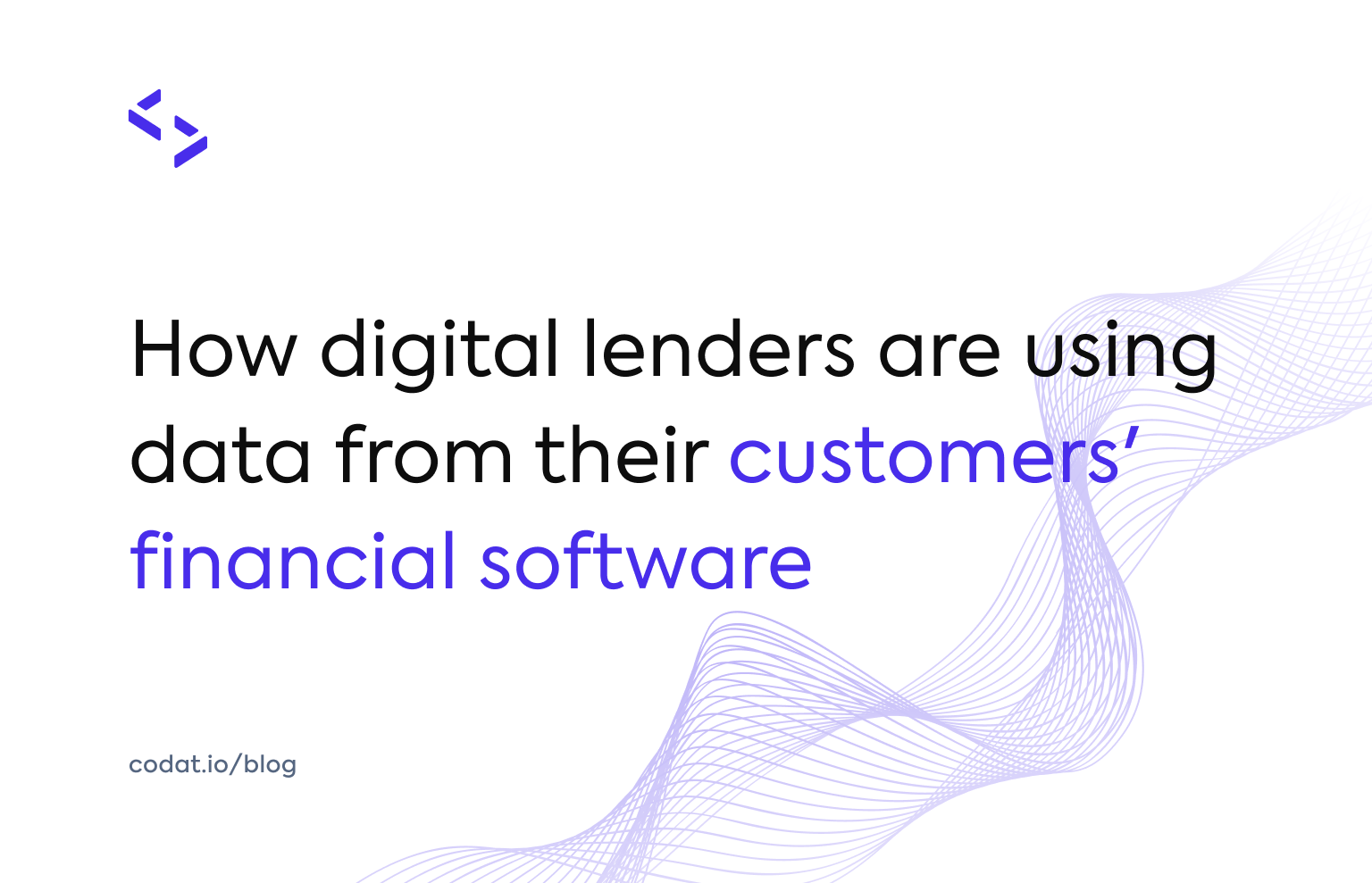
When it comes to credit decisioning, SMB expectations are evolving. Access to real-time, relevant data is the only way to offer the products they now expect.
Accessing capital has historically been a challenge for SMBs. For too long, they faced poor customer experiences due to non-digital and manual applications and inflexible repayments. In addition, poor lending processes led to lost deals and even bad debt for lenders due to a lack of real-time, relevant, and comprehensive data.
But, things are starting to change. Increasingly, incumbent lenders are losing market share to newly emerging challengers looking to revamp the sector.
Lenders need to use the right data
When it comes to traditional underwriting, a key issue is the lack of access to relevant data. Many incumbent lenders are still heavily reliant on outdated and static information from credit bureaus. This leads to lenders funding the wrong businesses without knowing, increasing risk ratios and their chance of borrowers defaulting on loans, while borrowers might be denied capital due to data based on an inaccurate understanding of their performance.
So, what types of data should lenders use?
1. Accounting data
Gaining a view of real-time financial statements, P&L, and balance sheets gives lenders a good idea of supplier and customer risk and the health of a business over time. Understanding if customers are paying taxes and suppliers on time is a good indication of the character of a company and how risky they may be. Platforms include Xero, Sage 50, and QuickBooks Online.
2. Sales data
Unlocking sales data, SKU product information, and chargebacks can paint a clearer picture of the quality of a business’s products and how well they are doing. This is particularly relevant to eCommerce businesses. Shopify, Stripe, and Square are already taking advantage of the insight sales data can provide by building lending businesses based on the data they already have to hand.
3. Banking data
Pulling banking data from platforms like Plaid and TrueLayer can help to lift the lid on the reality of a business’s financial health with information such as incomings, outgoings, and overdrafts. It’s an additional trustworthy and immutable data source, especially when cross-referenced with other data such as accounts.
4. Subscription data
Other data types can be used to understand the nuances of a business. Subscription data, from platforms such as Chargebee and Recurly, will break down recurring revenue, detailing subscription terms, the frequency of payments, and projected income. For example, if a business has many long-term contracts, with high conversion, its a good indicator of future revenue and cash flow.
5. Inventory data
Pulling Inventory data from platforms like Brightpearl and Zoho Inventory can reveal overhead expenses such as the value and amount of stock a business has. Lenders can use this information to assess future revenue by coupling it with sales data.
6. Payroll data
Headcount, turnover, and payroll expenses give lenders an understanding of how well a company is functioning internally. For example, if a business has high retention rates and steadily increasing salaries it can signal creditworthiness to a lender. Platforms include Gusto and Oyster.
SMB lending is changing for the better
Winners in this space are already leveraging the right data to automate processes and respond to their customers’ evolving needs. By enabling their SMB customers to share their data seamlessly, they can make smarter underwriting decisions and even launch the new products their SMB customers want faster.
Players like Clearco, for example, have leveraged a wide range of data sources, including sales data, to better understand the creditworthiness of their customers and expand their product suite to include inventory capital, marketing capital, and recurring revenue financing options.
But, building integrations takes time
Integrations are central to creating digital experiences and accessing real-time data from multiple sources. But, building this functionality is more complicated than you may think. Consider you need to develop each integration, standardise the data, and maintain those integrations for years to come.
Access to the data isn’t enough
Once you have access to the data, the hard work is far from over. You then need to find a way to extract meaningful insights from the information. The data needs to be cross-referenced to ensure reliability, categorised, and then ratios and metrics need to be calculated. Doing this manually takes a tremendous amount of effort and wastes a lot of time for both the lender and the borrower.
The path to digital lending on your own means spending time, money, and precious resources building and maintaining integrations and managing data sources instead of focusing on where your expertise lie.
Outsourcing the work
Many lenders choose instead to work with an API provider to streamline this process. But, selecting the right provider for your current and future needs requires careful consideration. Most API providers specialise in a particular type of data (e.g., accounting), use case (e.g., decisioning), or region (e.g., Europe).
Working with a provider of this nature can limit your ability to realise the full range of benefits API connectivity has to offer. It may also mean working with multiple third parties to access all the data you need, which will result in higher costs and a heavier development burden on your product and tech teams. Ideally, you’d get as much breadth and depth of connectivity from a single API provider.
How Codat can help
Our universal API offers accounting, banking, and commerce data in one platform, so you can access all the data you need, regardless of the systems your business customers use.
We’re committed to providing lenders with the tools they need to continue providing capital to their small business customers with confidence. If you need access to real-time, relevant data to get a comprehensive view of your SMB customers, we can help. We also enrich the data through standardisation and categorisation techniques and provide helpful ratios and metrics to bolster your underwriting processes.
Contact us using the form below or create an account to start building today.